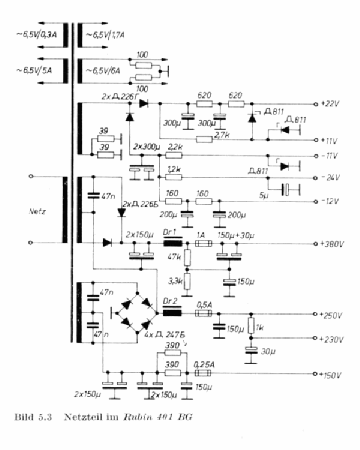
Д226d226
|
|
|||||||||||||||||||||||||||||||||||
|
Hits: 1808 Replies: 1
More Informations for D226
|
|
|
Hans M. Knoll
11.Aug.16 |
1
Hello Mrs. See here 0,6 Volt = U- forward Knoll
|
|
Hans M. Knoll
12.Aug.16 |
2
Der Beitragf kann gelöscht werden. Die Daten sind jetzt bei dem Bauteil. knoll |
|
Hits: 1905 Replies: 3
Diode D226. Silicon or Germanium?
|
|
|
Miguel Lopez
11.Aug.16 |
1
Hello everybody I've been using D226 diodes for years as they were part of Soviet Krim-218 TV set, and VEF-206 and Selena radios (PSU), which were very common in Cuba during the 80s. I have scavenged a lot of this diodes from those equipments and I have used them in my own experiments. I have found that the forward voltage drop of D226 diode is about 0.6V, which correspond to a Silicon diode. Now I have found at the D226 diode page at RMorg, that it is a Germanium diode. Can a Germanium P-N junction has a forward drop of 0.6V? I have some ideas about the answers: 1-) It is a special kind of Germanium diode with 0.6V drop 2-) It is three Germanium P-N junctions in series 3-) It is a Silicon diode. Anyway, is there any literature to consult about this? Any experience about this matter? Thanks in advance Miguel López |
|
Michael Watterson
11.Aug.16 |
2
It's basic band gap physics, the material decides the forward bias voltage drop, though there are special ways of getting a lower voltage drop (Schottky Silicon diodes can be as low as 0.1V). A 0.5V to 1V drop (depending on temperature and current) is typical of regular silicon diodes. There are diodes with multiple series chips/devices/crystals, but I never heard of it for germanium. See BZY 87/xxx wie muss diese Art von Diode gemessen werden? (I used Google Translate). Either there are two different diodes with same number, or RM page is wrong, or it's two series chips or silicon. The last two options are easy, the "knee" on Germanium is round and on silicon is sharp. Also at 20V reverse it you warm it (hair dryer or soldering iron close, not touching), the silicon will still not have measurable leakage on a 20uA FSD meter, but the Germanium diodes will. Perhaps you have Д226 diodes and the RM is a D226? Here Д226 (Click on thumbnails to see data) (Data) EDIT, All I know is that Russian uses B for volts. 300 is the Current not the forward volts? Actually about six years ago my assistant and I tested a wide variety if signal diodes for an RF signal level detector. Germanium, Schottky and silicon, with and without a slight bias. A bias didn't help. The lowest voltage HP Schottky diodes did out perform 1N914, 1N916, 1N4148, though oddly not by much, but not as good as the OA47. The 1N60 was nearly 6dB better performance than the 1N4148 and was best. The currently available 1N60 may not be at all like the 1946 part. |
|
Günther Stabe † 19.8.20
11.Aug.16 |
3
I did some research and found this web page - it might answer some questions. My source was an old catalog page from a member with cross references to East German types, e.g. GY118 - so I suggested germanium diodes... I have just changed the D226 page according to the "new" informations. I'm sorry for the confusion, but the sources for old components are very rare and not always correct. Best regards, Guenther Stabe |
|
Miguel Lopez
12.Aug.16 |
4
Thanks for your answers. I have in my PC an old website that no longer exist in the web, which states that Soviet diodes with designation numbers between 200 and 299 are Silicon rectifiers. I have not been able to cross-reference this info, so, that's the reason for my question here. Thanks |
End of forum contributions about this tube
| Data Compliance | More Information |





